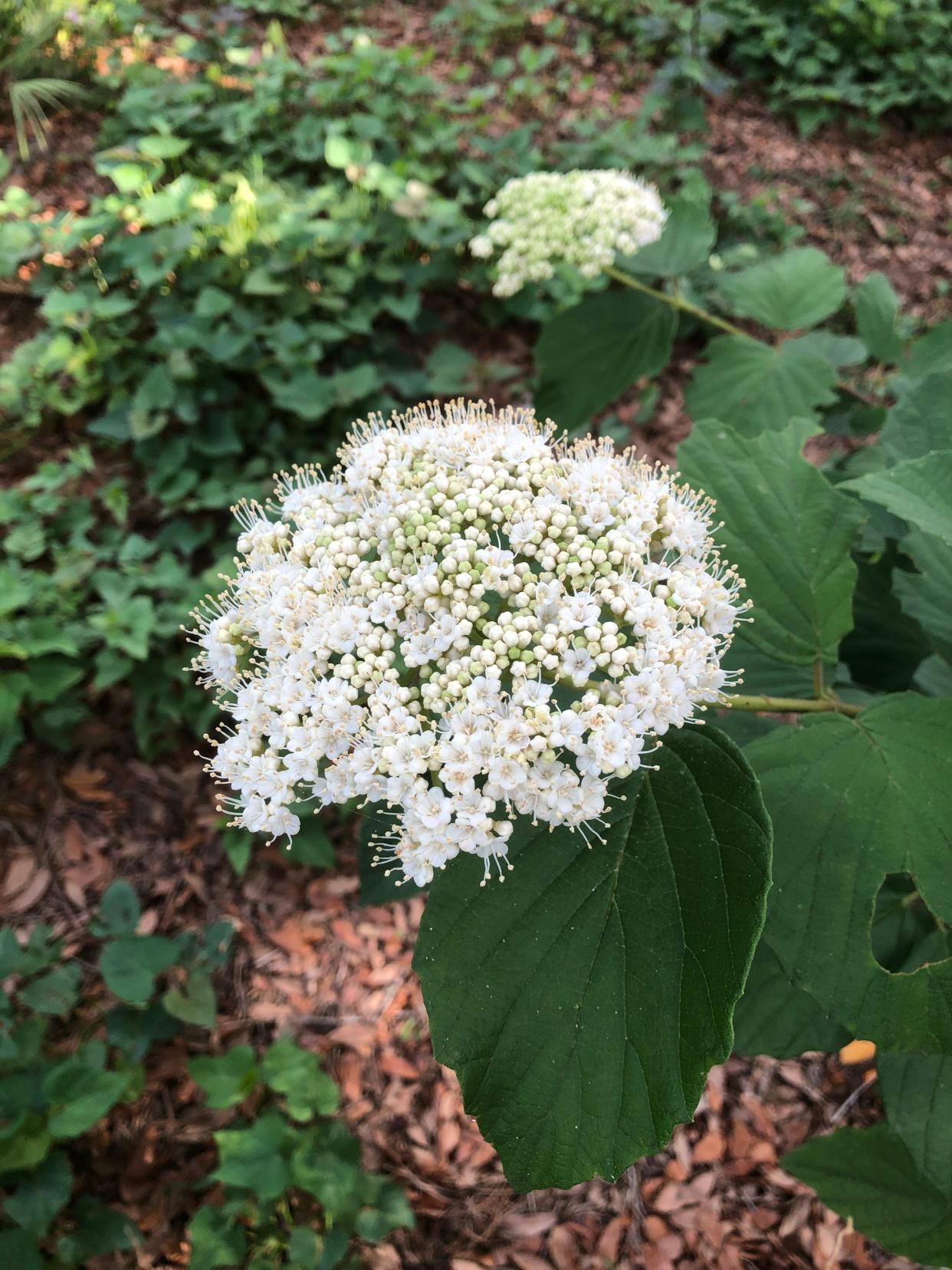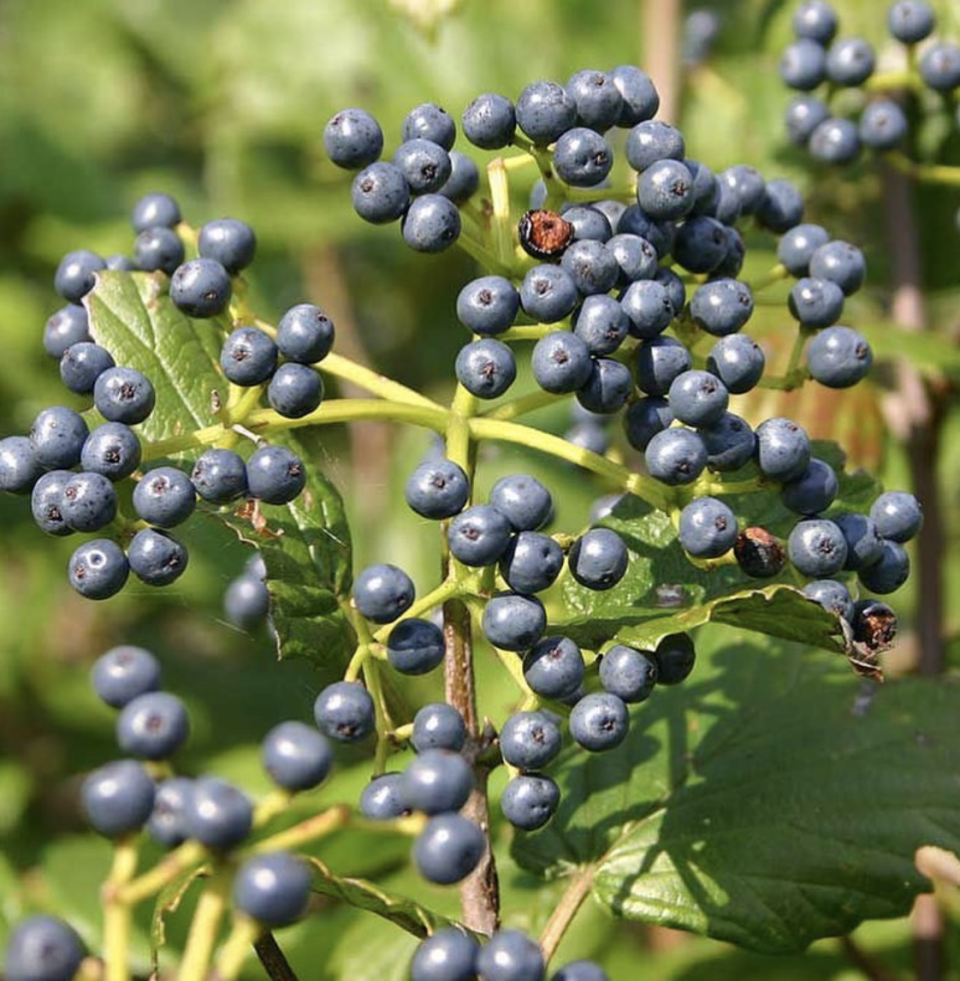Arrowwood viburnum a hardy native shrub with pollinator appeal

Editor’s note: Once a month, OSU Extension Master Gardener volunteers in Franklin County profile a plant that occurs naturally in central Ohio.
An interesting Ohio-native shrub with powerful pollinator appeal has much to offer yards. Arrowwood viburnum, Viburnum dentatum, is a reliable, multi-stemmed perennial shrub that displays flowers and fruits through much of spring and summer.
Native plant: Sugar maples provide shade, syrup and stunning scenery
The shrub does well in moist, well-drained soils in full sun or partial shade conditions. Mature specimens range between 5-10 feet in height with a roughly equal spread. Its form is rounded and arching, which adds to its overall aesthetics.
Spring blooms consist of small white flowers that form a flat-topped cluster known as a corymb. The non-fragrant flowers are desirable to many species of pollinators like red admirals and the spring azure butterfly. Arrowwood is also a larval host to hummingbird moths.

Arrowwood produces a type of fruit known as a drupe. A drupe is any fruit with an outer skin and a pulpy succulent middle that also contains a hard inner shell further enclosing a seed. Cherries are another example of a drupe fruit. The fruit of the Arrowwood viburnum is a dark bluish color and is favored by many songbirds, including Eastern bluebirds and gray catbirds. The drupes mature in late summer to early fall and offer a hearty fat content of 41%, a healthy alternative to nonnative honeysuckle fruits.
Arrowwood’s range stretches from the eastern U.S. to south Florida and west to the central U.S. from Iowa to Texas. It tolerates a variety of soils and pH types and is resistant to fire in the landscape. Additionally, it is drought-tolerant and can withstand soil compaction.
Native plant: Wild ginger suited to damp, shady spots in the garden
Arrowwood is a vigorous native plant often used as a border hedge or privacy screen. As the common name suggests, the multiple straight stems shoot upwards like arrows. The straight stems of this species were reportedly used as arrow shafts by Native Americans.
This low-maintenance plant can be propagated by seed or soft wood cuttings and spreads naturally by rhizomes or via seed dispersal. It is not known for spectacular fall foliage but does display hues of yellow to shades of oranges or reds. What it lacks in fall color it makes up for with winter hardiness.
Unfavored by white-tailed deer, arrowwood is a nice option for many and adds ecological value to the landscape.
Growing requirements
Hardiness zones: 3-9
Sun: Full sun, partial
Water: Moist, well-drained
Soil: Clay, loam, sand, rocky
Maintenance: Prune after flowering
Pests and disease: Whiteflies, viburnum leaf beetle
This article originally appeared on The Columbus Dispatch: Arrowwood shrub a favorite of pollinators like butterflies

